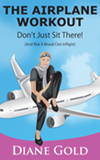Habit Change In One Step
HABIT CHANGE IN ONE STEP ~ ISSUE 219 ~ MARCH 7, 2017
 Habit change is alive and well. It happens every day, whether we are aware or not. The techniques we used to change habits years ago (I’m talking ten or a hundred or a thousand) are the same ones we use today. How this is possible is that the basic core of our psychology has not changed. We, humans, are who we are, and we react the way we react until we mold ourselves int humanitarians. New techniques are packaged differently, but they end up drawing from a small pool of possibilities that remain the same.
Habit change is alive and well. It happens every day, whether we are aware or not. The techniques we used to change habits years ago (I’m talking ten or a hundred or a thousand) are the same ones we use today. How this is possible is that the basic core of our psychology has not changed. We, humans, are who we are, and we react the way we react until we mold ourselves int humanitarians. New techniques are packaged differently, but they end up drawing from a small pool of possibilities that remain the same.
THE HABIT
The habit is a behavior pattern acquired by frequent repetition. We do it almost automatically. We have done it so many times that it no longer requires step by step thought.
As we know, there are several kinds of habits: 1) personal, 2) social (I am adding this one as of 2017, rather than combining it with the first) and 3) universal. They intertwine, but one affects our own body, another affects our self-perception and others. The other affects the outcome of the world.
1) Walking and exercise are personal habits. Once we have mastered them, we just do them! We no longer falter or wobble. We have trained our mind to focus on the activity and our environment; we have trained our muscles to perform the tasks.
2) On the other hand, there are flirtations with others we have developed to produce companionship or personas we embody to seem as if we are wealthy in the presence of the wealthy. For both of these, there is a fine line between habit and individual behavior. Sometimes, though, we act one way so often that it becomes “the” way we act. And, in this case, it is a habit.
3) Then we have prejudice or our habit of automatically going to war to fix conflict. These are universal habits. Once we know them, they are ours to own. We have trained our minds to embrace these habits. Every occurrence strengthens the habit. No matter how we came upon it, whether we were raised that way, hurt by someone of a particular group and turned our discomfort to the whole group, or told not to be a wuss so we lashed out; we have developed it.
HABIT CHANGE – THE GOOD NEWS
The good news is that habit change exists in ONE STEP. Have methods changed? Not really. Why? Because we still develop a habit the same way as one thousand years ago. The habit might be chronologically telling, but habits become ours through reacting to a trigger whose behavior gets us a reward, and repeating the reaction when triggered.
The simplest technique, and the one I always advocate, is based on the shortest road to success. The One Step Method (just beginning with the first step) is here for habit change. It’s always been there. Many have used it for many years without announcing they are using some technique to change a habit. Most have just responded to their trigger (a trigger such as an urge for something sweet, an urge to call someone an ethnic name, an urge to our protective of our country) by doing a new behavior over and over again. The result was that the urge for the sweet turned into an action to go eat a salad instead of going to eat ice cream, the urge to name call turned into self-reflection, the urge to protect the country turned into creating a framework to cause harmony rather than war.
CONCLUSION AND ACTION STEPS
Habit change in one step requires courage. We have to create a plan of action, immediately. Here are three behaviors as examples of what we might want to change with an action for each.
1) PERSONAL HABIT. If we want to combat eating ice cream when we crave sweets, our step would be to prepare salad with a few raisins, grapes, strawberries in it (this is an example) so that it is ready for eating upon our next urge. The same holds true if we desire a drink or a drug. We need to prepare a behavior beforehand, such as running around the block and saying hello to one neighbor. This running action will change perspective. It will give us a moment to see things other than our own existence, since we will be out in the world. Eating the salad may also be a solution to change the urge to drink or drug.
2) SOCIAL HABIT. If we get the urge to fit in and act something other than we are, our step would be to prepare a one-line greeting that does not reflect someone we are not and reflects who we are. Instead of saying how much fun we just had at OUR country club (if this is untrue), we might say, and this takes guts,
“I spent a lot of time in self-reflection.”
And working on habit change is, in fact, self-reflection. This rehearsed statement would also be a way to remind ourselves we are working on ourselves. And once we repeat the new behavior enough, our trigger of being false to impress will change into something new, possibly one that urges us to relay who we really are.
3) UNIVERSAL HABIT. If we want to combat our urge to slur someone of a particular ethnicity, we can create a sentence we will immediately text to a friend,
“I want to make an ethnic slur. Can we talk about this?”
This act will satisfy the urge to take action upon seeing the particular ethnic person. It will not hurt anyone, and it will allow us to discuss this anti-social urge with a friend. Eventually, this self-exploration will cause our urge to change
___
Planning is the key action step. We have to be ready for our own selves because we have loads of habits, and all behaviors are triggered by the need for some reward. Let us prepare to elevate ourselves. Habits do not have to rule us. If we take a moment to temper ourselves, we realize we are in charge of habits and habit change.
DIANE GOLD, PUBLISHER AND AUTHOR
Diane Gold, Founder of Warriors of Weight, Turning Habits Into Health, has been a mentor in tai chi, kung fu and meditation, has been a music, fitness and stress expert, dedicated mom, studying peaceful conflict resolution, habit replacement and has been certified in plant-based nutrition.
She believes in habit change. She says,
“When we have a method, we make great strides. When we randomly proceed to succeed, we are missing the very step that is required to create or re-create a habit: repetition. Using the one-step method is the simplest way to go. It allows for one pointed focus. No matter what.
“Think about it. Take one step. One step might not be simple, but it is less scary than two steps. And it is a success story in itself.
“Let’s consider that we can habit change. We choose when.
“By being aware of this, we can be kind of protective of ourselves and our fellow beings at all costs – and we are all always worth it.”

 The secret of habit change is to step. No one’s saying it’s easy. I am saying it’s not complex. I don’t care how many times we’ve heard the idea that we have to believe in ourselves to motivate or have a positive mental attitude to get it done; it’s just not true. It may be an easier road, but that may not be our reality. And, once we step; we will believe and motivate.
The secret of habit change is to step. No one’s saying it’s easy. I am saying it’s not complex. I don’t care how many times we’ve heard the idea that we have to believe in ourselves to motivate or have a positive mental attitude to get it done; it’s just not true. It may be an easier road, but that may not be our reality. And, once we step; we will believe and motivate. The secret reality is that we can take a step even when:
The secret reality is that we can take a step even when: 3)
3) Motivation to change, self-belief, balance, pain and joy do not enter into these scenarios. Commitment to military protocol or a belief system has caused people to delay the object of addiction. More comfortable living conditions have caused people to delay getting the object of addiction. And finally, the concept of the thrill of receiving an increased amount of the object of addiction was an excellent motivator.
Motivation to change, self-belief, balance, pain and joy do not enter into these scenarios. Commitment to military protocol or a belief system has caused people to delay the object of addiction. More comfortable living conditions have caused people to delay getting the object of addiction. And finally, the concept of the thrill of receiving an increased amount of the object of addiction was an excellent motivator. We develop habits based on how certain actions make us feel. Whether we wear designer clothes, keep our hair immaculate or stay fit because we enjoy people’s staring at us; we act out behaviors regularly to achieve these good feelings, aka rewards. The cue, which is the original feeling that makes us do a behavior urges us to work so we have access to buy clothing, get our hair done, so we look how we like. This urge also pushes us to work out so that our bodies look good, which gives us the end result: the reward of having people acknowledge our beauty. Appearance
We develop habits based on how certain actions make us feel. Whether we wear designer clothes, keep our hair immaculate or stay fit because we enjoy people’s staring at us; we act out behaviors regularly to achieve these good feelings, aka rewards. The cue, which is the original feeling that makes us do a behavior urges us to work so we have access to buy clothing, get our hair done, so we look how we like. This urge also pushes us to work out so that our bodies look good, which gives us the end result: the reward of having people acknowledge our beauty. Appearance These are only examples of appearance habits we may have. There are others of us who specifically wear clothing to make us invisible, since we don’t like it when people stare. And there are others of us who do not consider what people think; they are busy with their own lives and work.
These are only examples of appearance habits we may have. There are others of us who specifically wear clothing to make us invisible, since we don’t like it when people stare. And there are others of us who do not consider what people think; they are busy with their own lives and work. When we choose to change one of our habits, we replace the habit that was there with a new one. The old one is still there, but it is a “habit in the closet,” so to speak. As long as we are doing a new behavior and not opening the closet, the habit will stay put. For as long as we choose. Habit In The Closet
When we choose to change one of our habits, we replace the habit that was there with a new one. The old one is still there, but it is a “habit in the closet,” so to speak. As long as we are doing a new behavior and not opening the closet, the habit will stay put. For as long as we choose. Habit In The Closet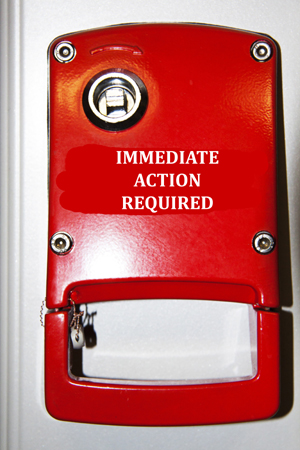

 1)
1)
 It is always a good idea to trust, to believe the next person, give credence to what we read, being astute when credentialing who’s saying what and knowing what authors are attached to an agenda other than truth is present.
It is always a good idea to trust, to believe the next person, give credence to what we read, being astute when credentialing who’s saying what and knowing what authors are attached to an agenda other than truth is present. Evidence-based medicine is the use of proof or high quality information and research in medicine, the science of prevention, diagnosis and treatment of a disorder of function, often called disease. Factual testing is used to assess benefits and risks of specific treatments prescribed by learned people in the medical field. How many times does one academic support another’s study, body of work, thesis – even overlooking its controversy – for the primary purpose of getting support back, be it money or editorial byline?
Evidence-based medicine is the use of proof or high quality information and research in medicine, the science of prevention, diagnosis and treatment of a disorder of function, often called disease. Factual testing is used to assess benefits and risks of specific treatments prescribed by learned people in the medical field. How many times does one academic support another’s study, body of work, thesis – even overlooking its controversy – for the primary purpose of getting support back, be it money or editorial byline? We, especially in the Western World, but common everywhere, have developed the habit of believing that, if a clinical trial has taken place, if a certified doctor has uttered it, if a governmental agency assigned to evaluate and cure illness has said it, if our pharmaceutical companies claim it (since they are so very regulated by the FDA and other government agencies), if it’s published in a medical journal; the information publicized from this event must be ethical, honest, conscientious, and, most of all, clinically based. This is a strong habit that we have been repeating since we were young, having been taught to trust doctors, nurses and other medical personnel as well products from the wonder drug companies whose breakthrough can cure disease.
We, especially in the Western World, but common everywhere, have developed the habit of believing that, if a clinical trial has taken place, if a certified doctor has uttered it, if a governmental agency assigned to evaluate and cure illness has said it, if our pharmaceutical companies claim it (since they are so very regulated by the FDA and other government agencies), if it’s published in a medical journal; the information publicized from this event must be ethical, honest, conscientious, and, most of all, clinically based. This is a strong habit that we have been repeating since we were young, having been taught to trust doctors, nurses and other medical personnel as well products from the wonder drug companies whose breakthrough can cure disease. Medical professionals incorporate information of the latest experiments and trials along with their own research, college research and academic experience to make decisions.
Medical professionals incorporate information of the latest experiments and trials along with their own research, college research and academic experience to make decisions. 7) From pharmaceutical representatives, whose companies often times are the sponsors and controllers of the clinical trials and the data published.
7) From pharmaceutical representatives, whose companies often times are the sponsors and controllers of the clinical trials and the data published.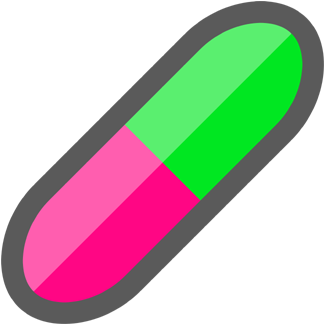 Of course, it is possible to hear about a one-shot treatment occurrence that absolutely saved a patient’s life that was paid for by a company or whose marketing is the reason we heard about it. And, if we are this patient, we are thankful and ecstatic and swear by this one single, random, non-duplicable effort because it saved us and we live. This is a dangerous way to get information, though.
Of course, it is possible to hear about a one-shot treatment occurrence that absolutely saved a patient’s life that was paid for by a company or whose marketing is the reason we heard about it. And, if we are this patient, we are thankful and ecstatic and swear by this one single, random, non-duplicable effort because it saved us and we live. This is a dangerous way to get information, though. We come back to trust, which, as we’ve said, is good. As long as we add in all the factors that can bias evidence, we can evaluate whether the results of the evidence-based medicine we so cherish have any basis in profit or furthering political careers or paving the way for employment at a pharmaceutical company.
We come back to trust, which, as we’ve said, is good. As long as we add in all the factors that can bias evidence, we can evaluate whether the results of the evidence-based medicine we so cherish have any basis in profit or furthering political careers or paving the way for employment at a pharmaceutical company.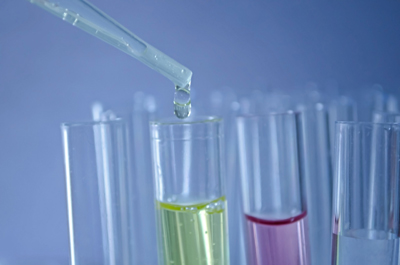 There is lots of medical research both in academia and in companies in the pharmaceutical industry, from medical student projects, from already working doctors and medical professionals that is outstanding, amazing, monumental, life changing, life saving, cooperatively integrated with every other discipline that exists, evidence-based for real with no prejudice based on agenda that is the pure truth. Our arms go out to you in thanks, praise and commendation. Keep up the great work. We are counting on you.
There is lots of medical research both in academia and in companies in the pharmaceutical industry, from medical student projects, from already working doctors and medical professionals that is outstanding, amazing, monumental, life changing, life saving, cooperatively integrated with every other discipline that exists, evidence-based for real with no prejudice based on agenda that is the pure truth. Our arms go out to you in thanks, praise and commendation. Keep up the great work. We are counting on you.
 Of course, we don’t. We have every intention of carrying out our newly designed plan that we’ve been considering for some time. We have the motivation, and we know all we have to do is,
Of course, we don’t. We have every intention of carrying out our newly designed plan that we’ve been considering for some time. We have the motivation, and we know all we have to do is, a)
a)  Use a supplement without researching its research and realizing that the referred to research isn’t public, is disorganized, was done using inconclusive method, doesn’t exist, is too old, was mismanaged, was word of mouth, used evidence-based information based on a control group of 30 people on which all world info is based, was gathered by the manufacturer and publicized in a magazine published by the manufacturer.
Use a supplement without researching its research and realizing that the referred to research isn’t public, is disorganized, was done using inconclusive method, doesn’t exist, is too old, was mismanaged, was word of mouth, used evidence-based information based on a control group of 30 people on which all world info is based, was gathered by the manufacturer and publicized in a magazine published by the manufacturer. We need one-pointed focus to embark on any strategy. It’s hard enough without our giving ourselves scattered mind.
We need one-pointed focus to embark on any strategy. It’s hard enough without our giving ourselves scattered mind.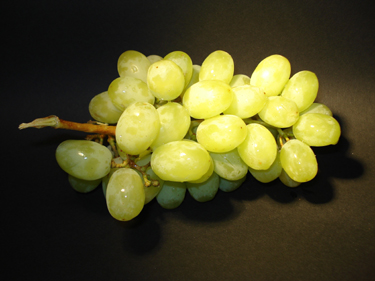 b)
b)  Join a gym, a dance class, meditation session now, even though you don’t want people to see the many rolls of fat you have. Waiting means not progressing, so go, go, go today!
Join a gym, a dance class, meditation session now, even though you don’t want people to see the many rolls of fat you have. Waiting means not progressing, so go, go, go today!
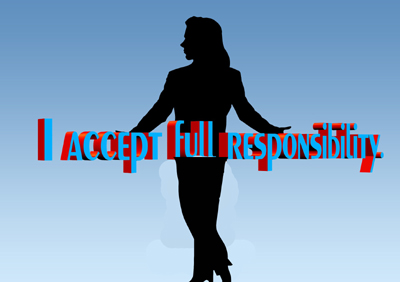 In the previous article in this series (June 24, 2013), I mentioned I was still looking for a primary care provider. I have found her. It is I, an unlicensed, non-medical person who knows a lot about nutrition and mind, body, spirit fitness. So far, I care the more about my own care than anyone I have found; I don’t treat myself like just another chart; I know the details of my case without having to look at a chart which is brief, at best; I have done research on nutrition and fitness and body processes and interactions that no medical personnel I know has done.
In the previous article in this series (June 24, 2013), I mentioned I was still looking for a primary care provider. I have found her. It is I, an unlicensed, non-medical person who knows a lot about nutrition and mind, body, spirit fitness. So far, I care the more about my own care than anyone I have found; I don’t treat myself like just another chart; I know the details of my case without having to look at a chart which is brief, at best; I have done research on nutrition and fitness and body processes and interactions that no medical personnel I know has done. Although I am looking forward to the day when all medical professionals offer electronic consults, the telehealth-telemedicine industry is already having us form a new habit, should we choose to accept what it is pushing. Their business model saves provider overhead, saves the government emergency visit costs for patients who get government subsidies, but the patient pays the same as before. As are many infrastructures, this one is abusive.
Although I am looking forward to the day when all medical professionals offer electronic consults, the telehealth-telemedicine industry is already having us form a new habit, should we choose to accept what it is pushing. Their business model saves provider overhead, saves the government emergency visit costs for patients who get government subsidies, but the patient pays the same as before. As are many infrastructures, this one is abusive. Does your doctor work for a pharmaceutical company? Did you know that some are commissioned to recruit patients for a new drug, getting paid per each head brought to the study? They are also trained to educate other doctors about the possible benefits of the drug so that other doctors will recruit patients to take the drug. Don’t know for sure, but I suspect that the educating doctor gets a cut of the stipend that every other doctor gets for bringing patients to the study. If this is the structure, it is multi-level marketing which I firmly believe in. But, in medicine, might there be agendas pushing prescribing techniques?
Does your doctor work for a pharmaceutical company? Did you know that some are commissioned to recruit patients for a new drug, getting paid per each head brought to the study? They are also trained to educate other doctors about the possible benefits of the drug so that other doctors will recruit patients to take the drug. Don’t know for sure, but I suspect that the educating doctor gets a cut of the stipend that every other doctor gets for bringing patients to the study. If this is the structure, it is multi-level marketing which I firmly believe in. But, in medicine, might there be agendas pushing prescribing techniques? Doctors and health professionals only get to see a summary of abstracts or the full abstract if they pay for a medical journal subscription that houses the abstract. The abstract is some editor’s summation of facts which may not reflect study results. How weird that drug study results are not open to patients. We’re the ones who have to decide to take them or not. These data are also not open to doctors. Should we just say,
Doctors and health professionals only get to see a summary of abstracts or the full abstract if they pay for a medical journal subscription that houses the abstract. The abstract is some editor’s summation of facts which may not reflect study results. How weird that drug study results are not open to patients. We’re the ones who have to decide to take them or not. These data are also not open to doctors. Should we just say, 7a)
7a) If you have no insurance, ask the provider’s office person for what you will be responsible if you have a routine visit, an x-ray, anything else commonly done in your type of provider’s office. Of course, the office person will say s/he won’t know until afterwards. At this point, mention that you are asking for the cost for an office visit and 3 x-rays. If you don’t have the x-rays, you can deduct that amount. Also, if you have no insurance, request of the office personnel that they request of the provider to be permitted to pay the allowed amount paid by people on an in-network insurance plan. Sometimes, they will have mercy. But, if you don’t ask, you’ll never know.
If you have no insurance, ask the provider’s office person for what you will be responsible if you have a routine visit, an x-ray, anything else commonly done in your type of provider’s office. Of course, the office person will say s/he won’t know until afterwards. At this point, mention that you are asking for the cost for an office visit and 3 x-rays. If you don’t have the x-rays, you can deduct that amount. Also, if you have no insurance, request of the office personnel that they request of the provider to be permitted to pay the allowed amount paid by people on an in-network insurance plan. Sometimes, they will have mercy. But, if you don’t ask, you’ll never know.

 We, as humans, have a variety of requirements. To be at our best, we need a balanced infrastructure to support us. The simple version of this concept is that we need great nutrition, a little exercise, a way to be creative, love and companionship, daily relaxation, enough rest and a place to do this in. Each of us has a little bit different make-up and needs more or less in each of these areas, depending upon who we are.
We, as humans, have a variety of requirements. To be at our best, we need a balanced infrastructure to support us. The simple version of this concept is that we need great nutrition, a little exercise, a way to be creative, love and companionship, daily relaxation, enough rest and a place to do this in. Each of us has a little bit different make-up and needs more or less in each of these areas, depending upon who we are.

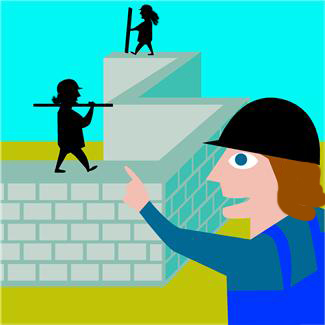


 To succeed at our New Year’s Resolution Habit Change, repetition is key. Whatever our new behavior, it must be repeated for a good 3-week period as a humble beginning. I just read an article saying how 21 days to change a habit is a myth, and 66 days is more realistic. If you’re like me, it can take 90-180 days to take hold, and repetition is still necessary on a daily basis after that.
To succeed at our New Year’s Resolution Habit Change, repetition is key. Whatever our new behavior, it must be repeated for a good 3-week period as a humble beginning. I just read an article saying how 21 days to change a habit is a myth, and 66 days is more realistic. If you’re like me, it can take 90-180 days to take hold, and repetition is still necessary on a daily basis after that.

 “Speak out,”
“Speak out,” What transpired for various reasons has been a culture of speakers with no solutions, many just “orating for ego” (good T-shirt). Since there has not been a focus solving vs. complaining in modern times, it is more common to hear groups of complainers than groups of problem solvers. Plus, it’s more difficult to create than to condemn (another good T-shirt, “create, don’t condemn”).
What transpired for various reasons has been a culture of speakers with no solutions, many just “orating for ego” (good T-shirt). Since there has not been a focus solving vs. complaining in modern times, it is more common to hear groups of complainers than groups of problem solvers. Plus, it’s more difficult to create than to condemn (another good T-shirt, “create, don’t condemn”). In order to solve vs. complain, we follow the process for any habit change: cue, replace the old action, reward.
In order to solve vs. complain, we follow the process for any habit change: cue, replace the old action, reward.
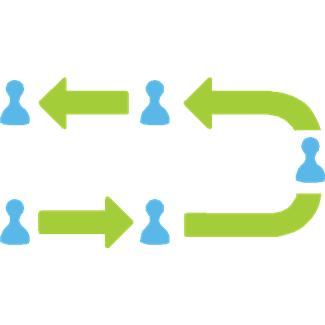
 Now that we are evolved enough to understand this, it is time to consider the solution process with every speech. We may have to change our habit, if we are used to being critical, not constructive. We can certainly slap the wrist of education for lack of emphasis on oration without solution. And we can change how we educate from now on.
Now that we are evolved enough to understand this, it is time to consider the solution process with every speech. We may have to change our habit, if we are used to being critical, not constructive. We can certainly slap the wrist of education for lack of emphasis on oration without solution. And we can change how we educate from now on.

 When thinking about social influence and habit change, I think of doing physical fitness like tai chi, going to the gym, going to a weight watch group, going to a rehab center. The function of each of these group activities is motivation of some kind. Let’s look at how the group motivates us.
When thinking about social influence and habit change, I think of doing physical fitness like tai chi, going to the gym, going to a weight watch group, going to a rehab center. The function of each of these group activities is motivation of some kind. Let’s look at how the group motivates us. When we look at the amount of people who go back to their old habits after six months, a year, five years; it can be disheartening. There’s an interesting statistical article from 2004 about how treatment doesn’t work at:
When we look at the amount of people who go back to their old habits after six months, a year, five years; it can be disheartening. There’s an interesting statistical article from 2004 about how treatment doesn’t work at: People think tai chi is for exercise or defense, alone. It’s really for perception change. By doing a powerful exercise as tai chi is, we learn a systematic approach to movement. This system gives us tools to use in everyday life. As we acquire the patience to endure tremendous body exertion, we are learning a tool that works with anything in life. We have the understanding to know that the physical exertion and mental concentration needed to physically execute the movement is teaching us to follow through. And it is showing us we can do it.
People think tai chi is for exercise or defense, alone. It’s really for perception change. By doing a powerful exercise as tai chi is, we learn a systematic approach to movement. This system gives us tools to use in everyday life. As we acquire the patience to endure tremendous body exertion, we are learning a tool that works with anything in life. We have the understanding to know that the physical exertion and mental concentration needed to physically execute the movement is teaching us to follow through. And it is showing us we can do it. It’s the same if we surround ourselves with people who do not take drugs or drink or overeat or gamble. We will be more likely to accept behaving in a similar fashion, especially if they know we are working on habit change. If we keep repeating a new behavior in place of the old habit at the same time as building a personal foundation, we will succeed. And what’s missing at the start will no longer be missing. We will have developed, not only new behaviors, but a structure within ourselves that will sustain the way we wish to live.
It’s the same if we surround ourselves with people who do not take drugs or drink or overeat or gamble. We will be more likely to accept behaving in a similar fashion, especially if they know we are working on habit change. If we keep repeating a new behavior in place of the old habit at the same time as building a personal foundation, we will succeed. And what’s missing at the start will no longer be missing. We will have developed, not only new behaviors, but a structure within ourselves that will sustain the way we wish to live. There is one secret to habit change. We don’t need to be college-educated to understand it. We don’t have to have been brought up in a wealthy home to use it. It is the same in every country. It applies to every habit. We all know the concept as it applies to daily life. Yet, it’s still a secret.
There is one secret to habit change. We don’t need to be college-educated to understand it. We don’t have to have been brought up in a wealthy home to use it. It is the same in every country. It applies to every habit. We all know the concept as it applies to daily life. Yet, it’s still a secret. In order to hear it, we must be ready at this very moment to realize its truth; and that if we don’t make it a priority in our lives, we will go another way. Easiest is best, and that’s upon what this secret is based.
In order to hear it, we must be ready at this very moment to realize its truth; and that if we don’t make it a priority in our lives, we will go another way. Easiest is best, and that’s upon what this secret is based. Picture the situation where we get an urge to eat cake. We are on a strict regimen not to include cake in our food plan. If we don’t act with instant motion within five seconds of the urge, we have already given ourselves time enough to plan which way we will walk to the cake store, passing an Automatic Teller Machine along the way, since we keep no cash with us to avoid running out to buy food. Oops, we forgot about the ATM card. Or figuring out how to run up an account with the local grocer if we have no cash, if we have remembered not to have an ATM card around.
Picture the situation where we get an urge to eat cake. We are on a strict regimen not to include cake in our food plan. If we don’t act with instant motion within five seconds of the urge, we have already given ourselves time enough to plan which way we will walk to the cake store, passing an Automatic Teller Machine along the way, since we keep no cash with us to avoid running out to buy food. Oops, we forgot about the ATM card. Or figuring out how to run up an account with the local grocer if we have no cash, if we have remembered not to have an ATM card around. Imagine it’s the end of the work day, we are closing up our store and start getting the urge to join all our buddies across the street and drink alcohol. Yet, we know, at this time, we have decided to abstain from alcohol because it does not support us. So, when we feel that craving, we have a choice: we can act within 5 seconds and take a new action that does not involve alcohol OR wait and go drink alcohol, a behavior we already know is not working for us. If the people at the pub are really our buddies, we will see them later, not in the bar.
Imagine it’s the end of the work day, we are closing up our store and start getting the urge to join all our buddies across the street and drink alcohol. Yet, we know, at this time, we have decided to abstain from alcohol because it does not support us. So, when we feel that craving, we have a choice: we can act within 5 seconds and take a new action that does not involve alcohol OR wait and go drink alcohol, a behavior we already know is not working for us. If the people at the pub are really our buddies, we will see them later, not in the bar. We have a very short window of opportunity in which to execute the one secret to habit change. It’s usually in that five second range that we must act. If we don’t take a new action within that time, we will habitually do our old behavior. And changing our habit will wait on the sidelines another day.
We have a very short window of opportunity in which to execute the one secret to habit change. It’s usually in that five second range that we must act. If we don’t take a new action within that time, we will habitually do our old behavior. And changing our habit will wait on the sidelines another day.
 Do it. It is massively impactful, requires little activity, not much effort other than the effort of doing magic on or tricking one’s own mind. And it works on all the urges to a large degree.
Do it. It is massively impactful, requires little activity, not much effort other than the effort of doing magic on or tricking one’s own mind. And it works on all the urges to a large degree.
